Abstract
Information on the interaction between mixed populations in the rumen and plant phenolics is required to fully elucidate the limitations of phenolic compounds on forage digestibility. The objective of this study was to examine the degradation of Italian ryegrass (Lolium multiflorum L.) hay incubated with mixed ruminal populations in consecutive batch culture (CBC) with or without phenolic acids or phenolic compounds extracted from plant cell walls. Each CBC consisted of a series of 10 cultures (3 replicates per culture) inoculated (10%, vol/vol) in sequence at 48-h intervals with microbial suspension from the previous set of cultures. All cultures were grown on a semidefined medium containing Italian ryegrass hay, and each CBC was initiated with an inoculum from the rumen. Rumenlike fermentation characteristics were maintained in control CBCs by repeated inoculum transfer. Treatment CBCs were transferred as described above, but cultures 5, 6, and 7 were incubated in the presence of trans-p-coumaric, cis-p-coumaric, or trans-ferulic acid or phenolics extracted from the cell walls of maize stem or barley straw. Mean apparent dry matter disappearance in control CBC cultures was 495 mg per g of hay, whereas the presence of phenolics reduced the initial dry matter disappearance by 6.3 to 25.6%. trans-p-Coumaric acid and, to a lesser extent, the phenolics from cell walls of maize stem were the most inhibitory compounds for dry matter disappearance and for the production of volatile fatty acids; trans-p-coumaric acid altered the molar ratio of acetate/propionate/butyrate. The CBC further showed variations in the ability of the rumen microbial population to adapt to phenolic compounds.
Full text
PDF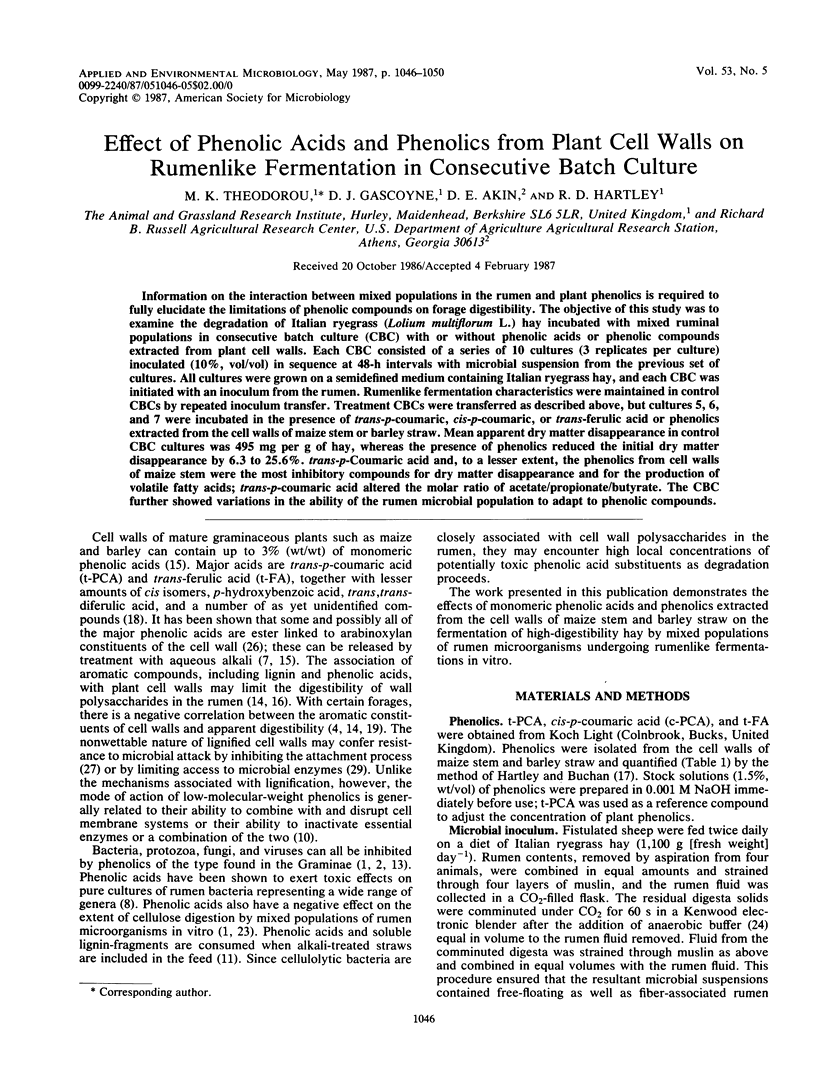
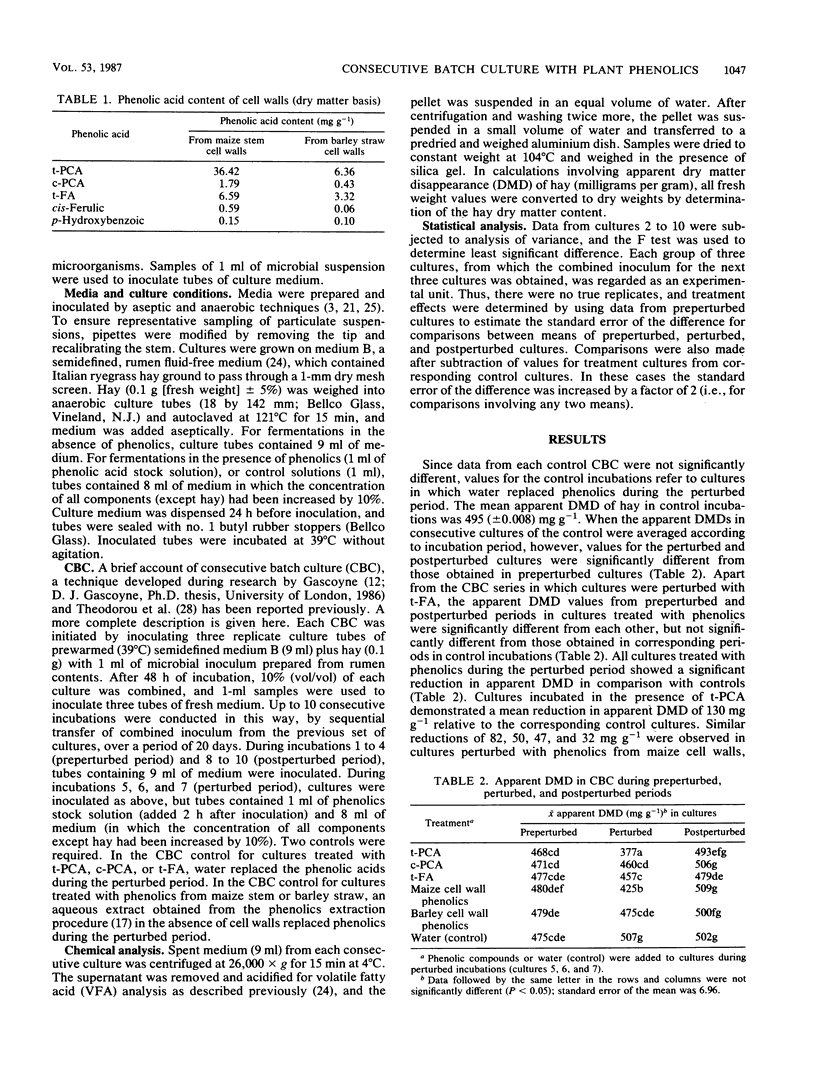
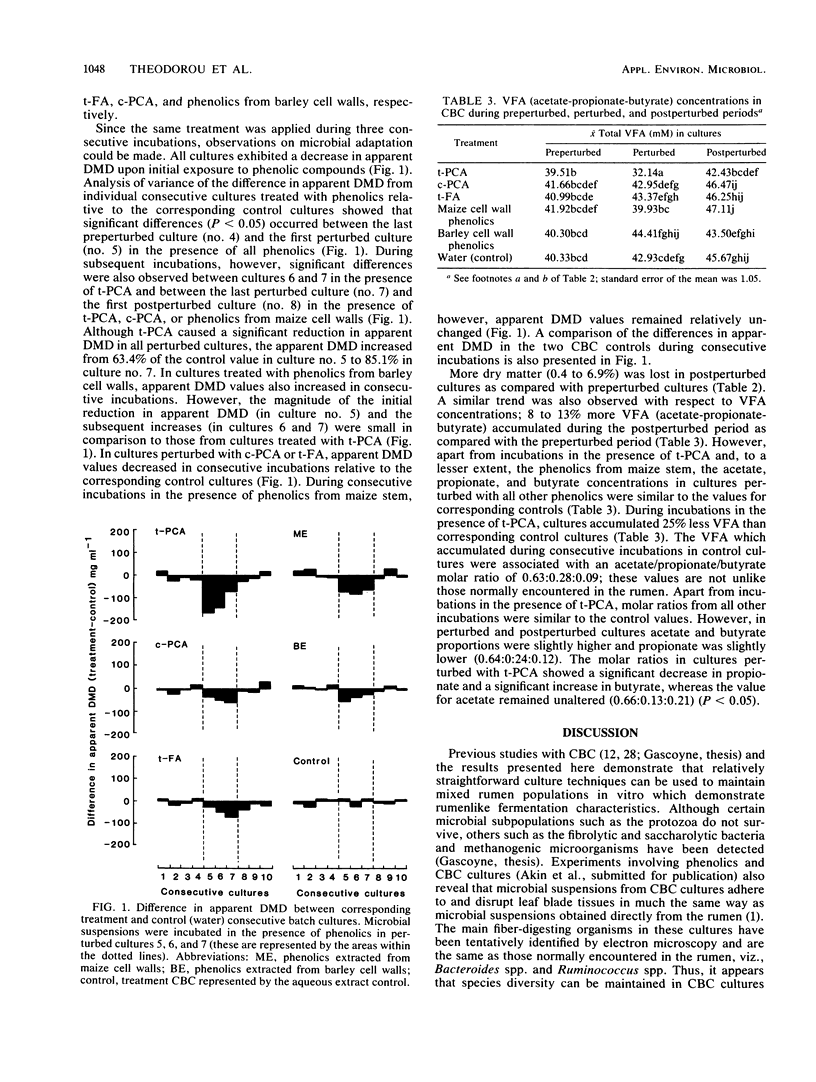
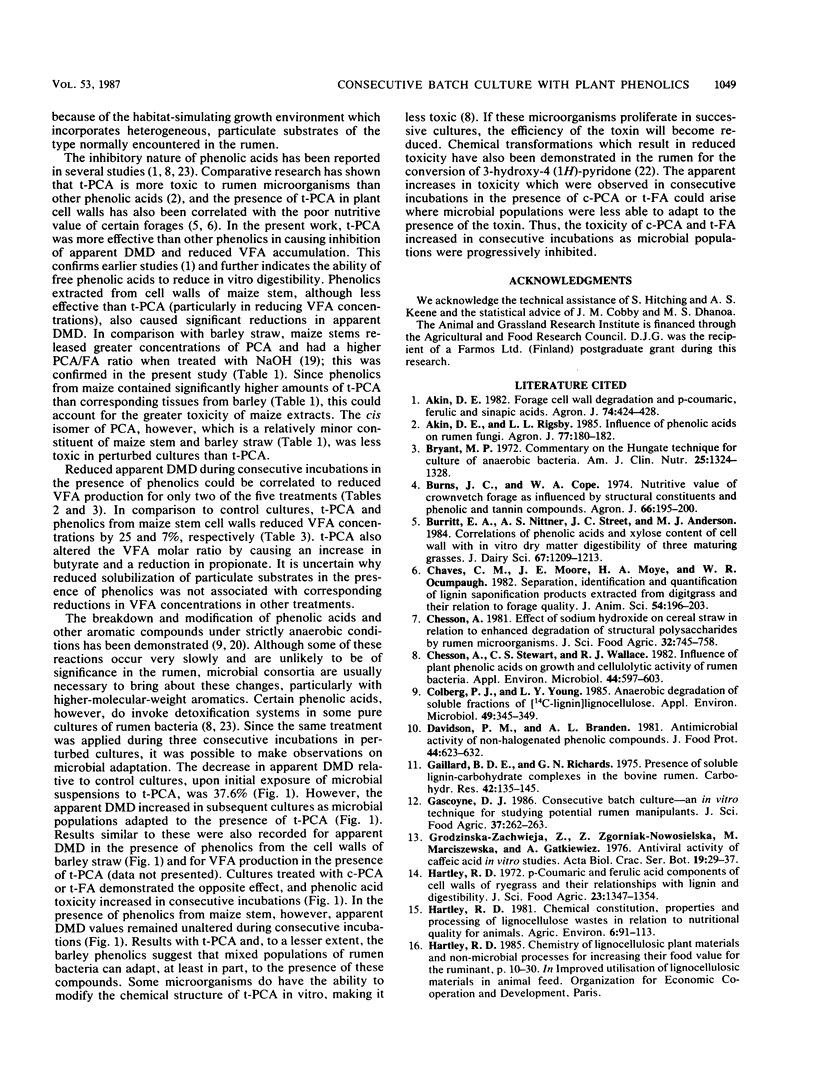
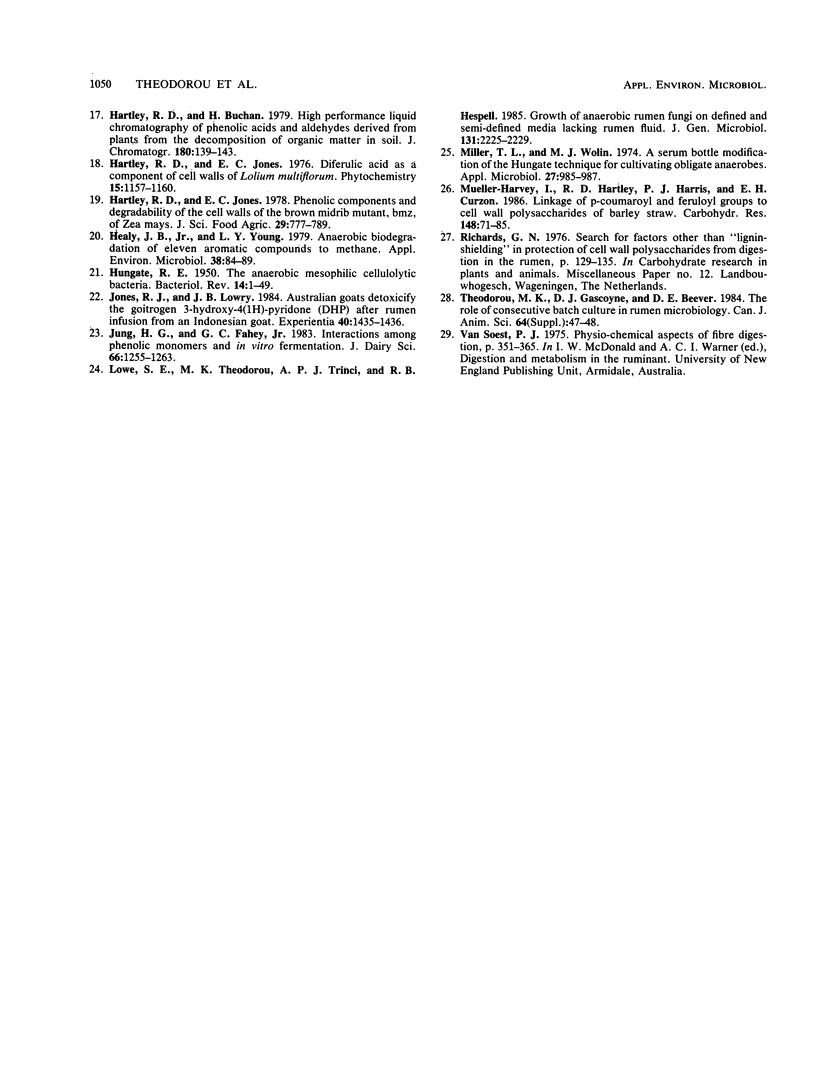
Selected References
These references are in PubMed. This may not be the complete list of references from this article.
- Bryant M. P. Commentary on the Hungate technique for culture of anaerobic bacteria. Am J Clin Nutr. 1972 Dec;25(12):1324–1328. doi: 10.1093/ajcn/25.12.1324. [DOI] [PubMed] [Google Scholar]
- Chesson A., Stewart C. S., Wallace R. J. Influence of plant phenolic acids on growth and cellulolytic activity of rumen bacteria. Appl Environ Microbiol. 1982 Sep;44(3):597–603. doi: 10.1128/aem.44.3.597-603.1982. [DOI] [PMC free article] [PubMed] [Google Scholar]
- Colberg P. J., Young L. Y. Anaerobic degradation of soluble fractions of [C-lignin]lignocellulose. Appl Environ Microbiol. 1985 Feb;49(2):345–349. doi: 10.1128/aem.49.2.345-349.1985. [DOI] [PMC free article] [PubMed] [Google Scholar]
- Copé R. Le traitement médical des variqueux opérés. Phlebologie. 1974 Apr-Jun;27(2):195–200. [PubMed] [Google Scholar]
- Gaillard B. D., Richards G. N. Presence of soluble lignin-carbohydrate complexes in the bovine rumen. Carbohydr Res. 1975 Jun;42(1):135–145. doi: 10.1016/s0008-6215(00)84106-3. [DOI] [PubMed] [Google Scholar]
- HUNGATE R. E. The anaerobic mesophilic cellulolytic bacteria. Bacteriol Rev. 1950 Mar;14(1):1–49. doi: 10.1128/br.14.1.1-49.1950. [DOI] [PMC free article] [PubMed] [Google Scholar]
- Healy J. B., Young L. Y. Anaerobic biodegradation of eleven aromatic compounds to methane. Appl Environ Microbiol. 1979 Jul;38(1):84–89. doi: 10.1128/aem.38.1.84-89.1979. [DOI] [PMC free article] [PubMed] [Google Scholar]
- Jones R. J., Lowry J. B. Australian goats detoxify the goitrogen 3-hydroxy-4(1H) pyridone (DHP) after rumen infusion from an Indonesian goat. Experientia. 1984 Dec 15;40(12):1435–1436. doi: 10.1007/BF01951931. [DOI] [PubMed] [Google Scholar]
- Miller T. L., Wolin M. J. A serum bottle modification of the Hungate technique for cultivating obligate anaerobes. Appl Microbiol. 1974 May;27(5):985–987. doi: 10.1128/am.27.5.985-987.1974. [DOI] [PMC free article] [PubMed] [Google Scholar]


